
There are lots of reasons why it makes perfect sense to find out how to grow basil indoors. Growing this favorite herb indoors means you'll have a fresh supply easily to hand whenever you need it for cooking or garnishing dishes.
It also means you can grow basil all year round for a continuous supply, something that's much harder to do if you grow it outdoors as this is one herb that can be picky about weather, especially if you live in a cool climate. Plus of course, your basil plant is more likely to be bothered by pests in the garden.
Find out how to grow basil and you'll soon discover that homegrown leaves taste so much better than bunches from the grocery store, which have a tendency to wilt and don't have that freshly picked quality that adds standout to your cooking. All you need is a pot, some soil, and a packet of seeds.
The best way to grow basil indoors
Step 1: Sow seeds in the right way
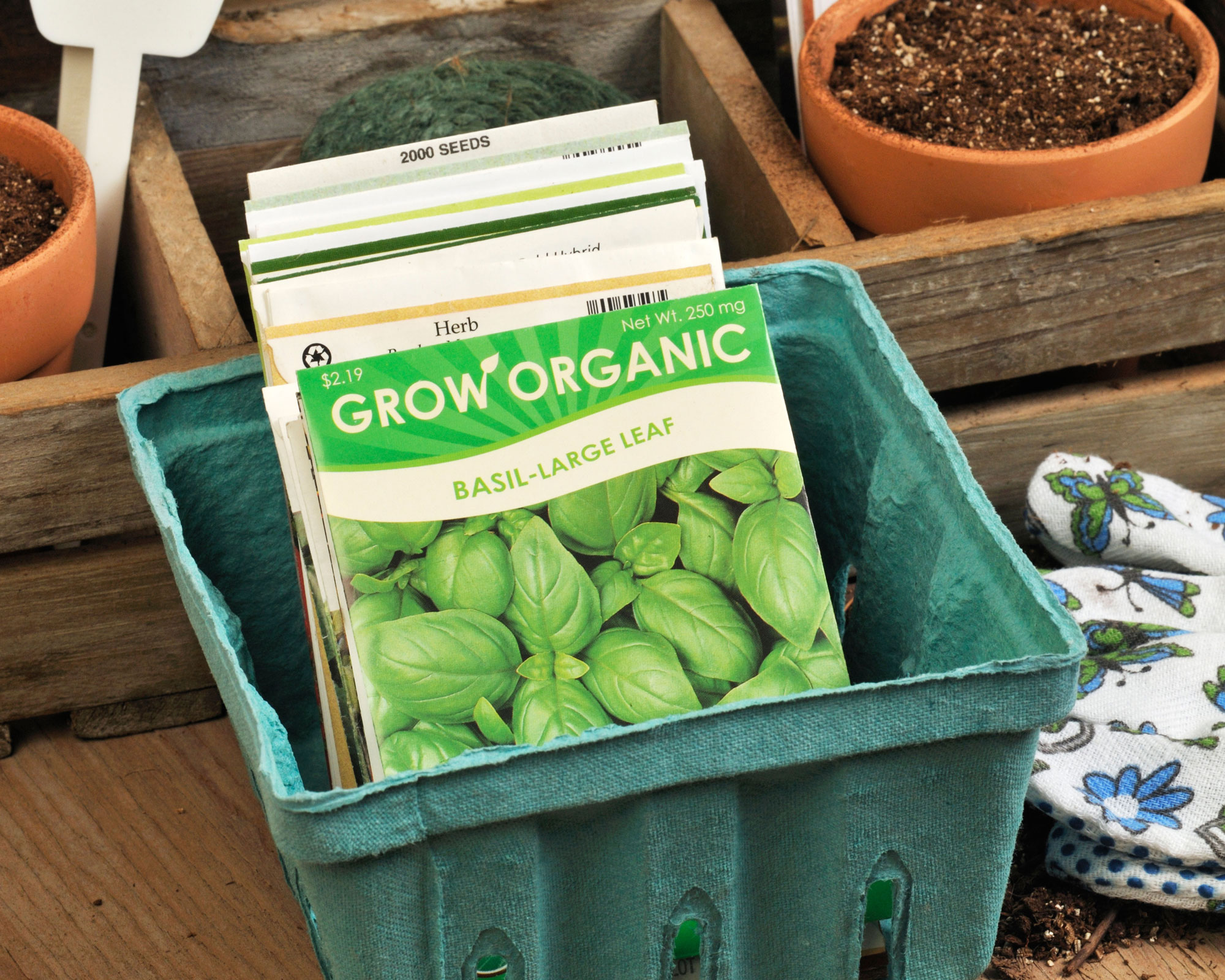
Once you've decided on the variety of basil you want to grow planting the seeds is easy. You can sow them straight into the pot of your choice. This means you don't have the bother of starting them off in tiny pots or cells and then transplanting them to bigger pots once they grow.
Fill a pot (or several pots, depending on how much you want to grow at any one time) with moist free-draining soil or seed starting mix formula. Sow seeds ¼ inch deep and one inch apart. Seeds can be fiddly so it's easiest if you mark each planting spot with the tip of a pencil, drop the seeds into place, then cover with a light layer of soil.
Water lightly with a mister or spray so you don't dislodge the seeds.
Step 2: Grow the seeds in the ideal location
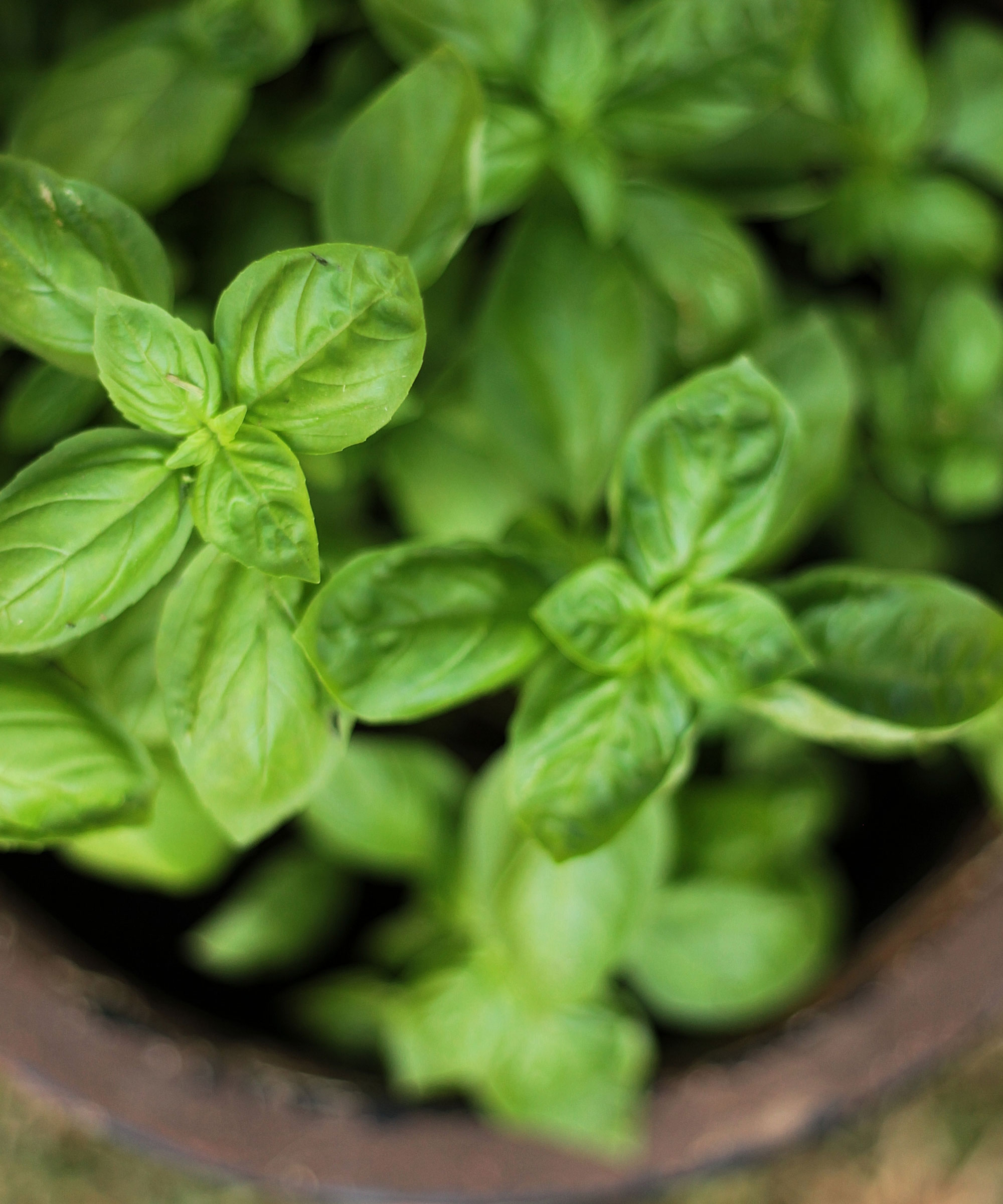
Basil grows well in containers indoors at any time of year provided it has enough light, is grown at the right temperature, and isn't exposed to cold draughts in the cooler months. This means it's important to choose where to grow basil in the house as this can affect how well your plant does.
Basil loves about six hours of sunshine every day but don't choose a space that is too sunny or this will scorch the leaves. So a sunny windowsill is ideal, such as a south or south-west facing one, as long as you protect the plant from any hot midday sun.
The optimal temperature for germination is 70°F, so if you are planning on growing basil in the cooler months consider using a propagator or heat pad to speed up germination. Alternatively, cover the pot with a plastic bag secured with an elastic band to increase the temperature by creating a mini-greenhouse.
Give basil the right conditions and seeds should sprout after 5-10 days.
Step 3: Keep up with regular watering
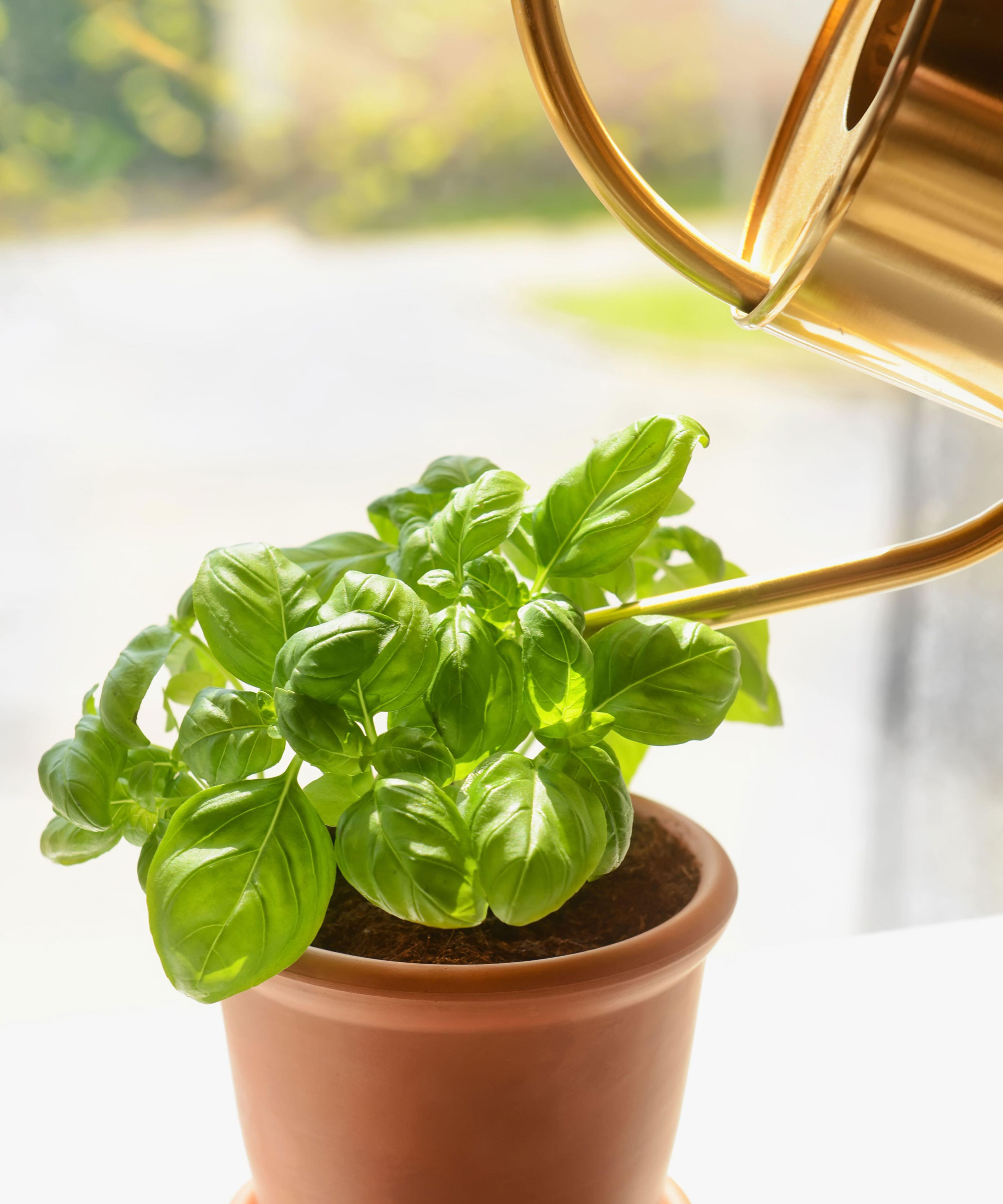
Basil plants need regular watering as their preferred growing medium is moist, well-drained soil. But they don't like sitting in water or wet soil, and this can lead to the roots rotting and your plant failing. So always check water isn't pooling in the saucer after watering and tip away any excess. Equally don’t let the soil dry out and forget to water it.
Adjust your watering routine according to how your plant is looking. It's a good idea to pay attention to the leaves and the soil when it comes to your watering routine, rather than sticking to once a week on the same day.
If the leaves are wilting or the soil is rock hard it's a clear indication you need to water more. If the soil is dark and sodden and smells unpleasant it's an indication that you should be watering less.
Step 4: Thin out seedlings if your pot is overcrowded
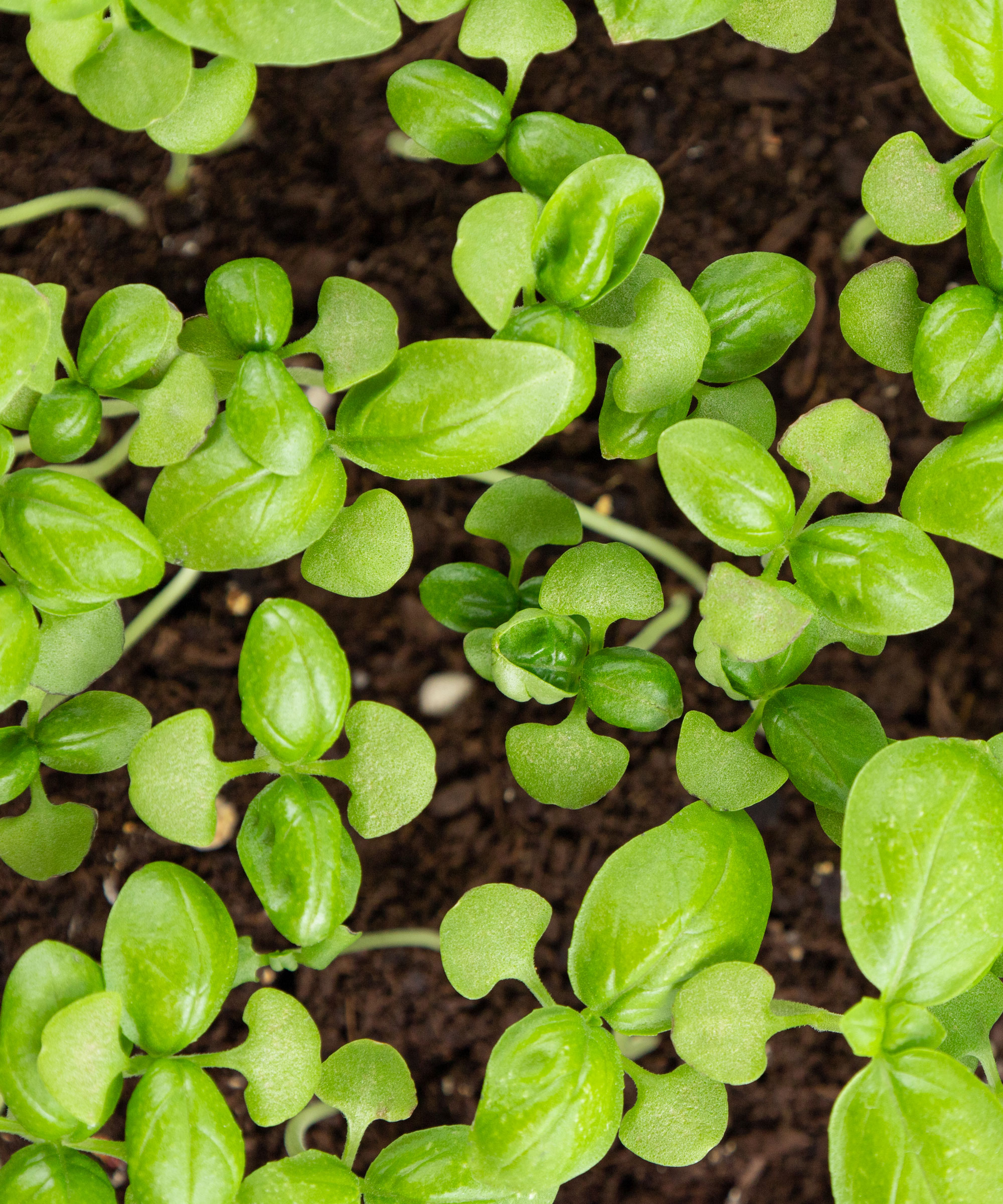
If you think your pot of basil is looking overcrowded as too many seedlings have developed (maybe your seed spacing wasn't accurate) it's time to thin out your seedlings so that each one has the space and share of water and nutrients it needs to grow into a healthy plant.
When the basil seedlings are large enough to handle, you can split a few off and plant them into separate pots. It's also a good idea to keep an eye on their roots. If they start coming through the drainage holes at the bottom of the pot this means it's time to upgrade them into larger pots.
Step 5: Harvest the leaves

Young basil plants grow so quickly that you'll be harvesting leaves in as little as three weeks. Once plants are about 6 inches tall, pinch out the growing tips as needed for cooking and garnishing. This will also encourage bushy growth but avoid harvesting too many leaves at once as this may weaken your plant.
"The best way to enjoy a luscious crop of basil leaves is to keep the plant producing side branches with more and more leaves,' says Maggie Stuckey. 'You do this with a kind of pruning, often called pinching, because the stems are soft enough you can do it with your fingertips."
This is based on a simple but vital bit of botany. "If you remove the growing tip from a stem the next buds lower down will be stimulated to open up and develop into side branches," says Maggie. "Put any trimmings to good use in tonight's pasta sauce."
Watch for signs of flower buds forming, and pinch these off to promote more foliage. There's another reason for doing this too. "Many people believe that once the plant starts to flower the overall flavor of the leaves deteriorates," says Maggie. The flowers are also edible and may be used as a garnish.
Step 6: Propagate your plant to get more basil
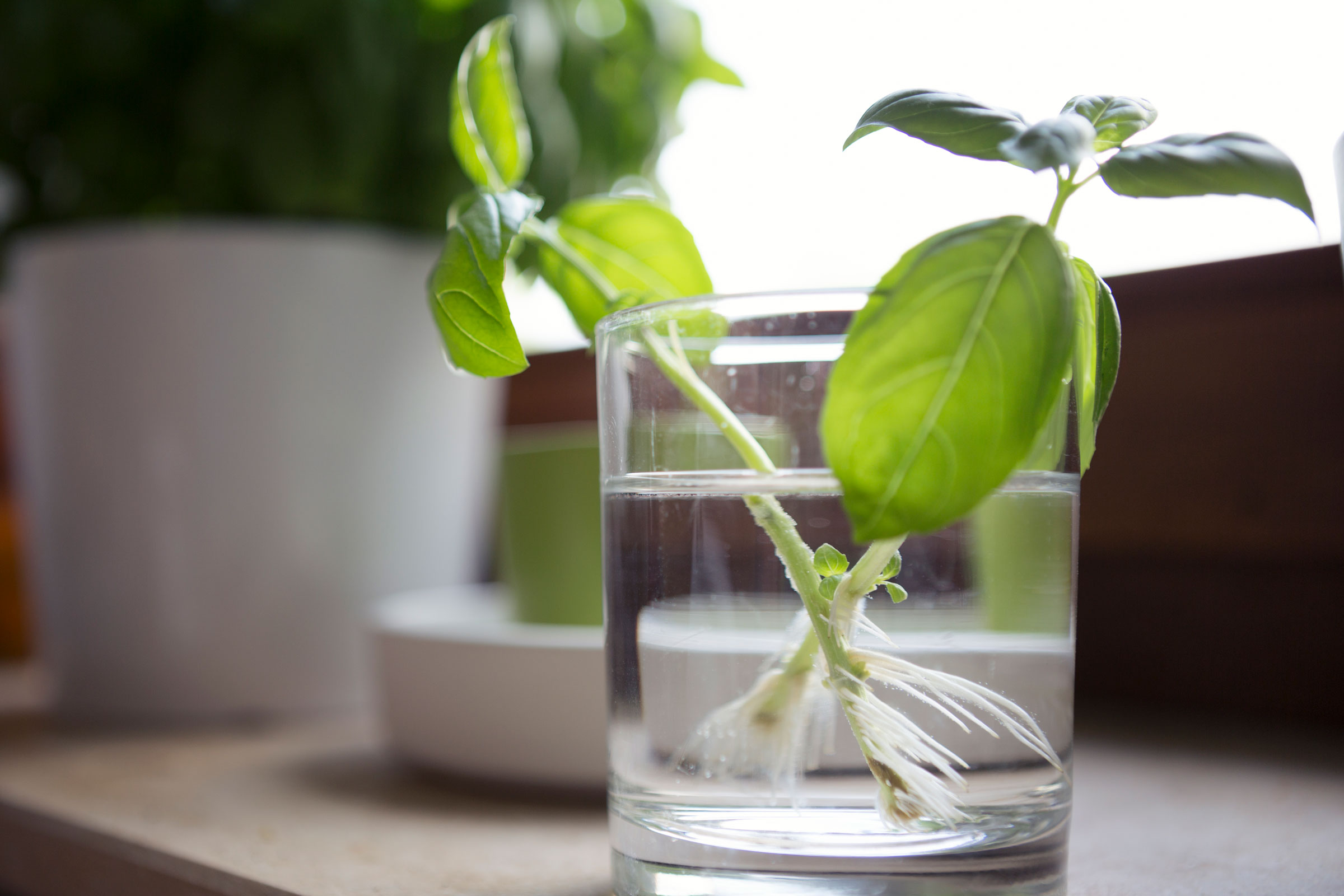
Now you've found out how to grow basil indoors you will want to continue your success. The good news is you can now find out how to grow an endless supply of basil for free.
"Use a technique called propagation, which involves taking a cutting from the parent plant, rooting it in water or soil, and growing a brand new plant," says kitchen garden designer Resh Gala. "The easiest way to get more basil plants is to snip off a healthy stem and strip off the leaves from the bottom 2 inches of the stem. Place the cutting into a small glass of water, making sure no leaves are submerged in the water, and put on a sunny windowsill."
Change the water every couple of days to keep it fresh. You should see white roots starting to develop after a week to 10 days. Then simply plant up the cutting in a pot of soil and continue looking after it as above.
Basil growing essentials

Price: $19.93/1
If your kitchen only has a few herbs, make sure that basil is one of them. The Urban Agriculture Basil Kit is so easy to grow that you’ll be harvesting your own basil leaves in a matter of weeks. The kit includes everything you need: a pack of organic basil seeds, a small bag of organic soil, a plant tag, and a nifty container made of recycled tea bags.
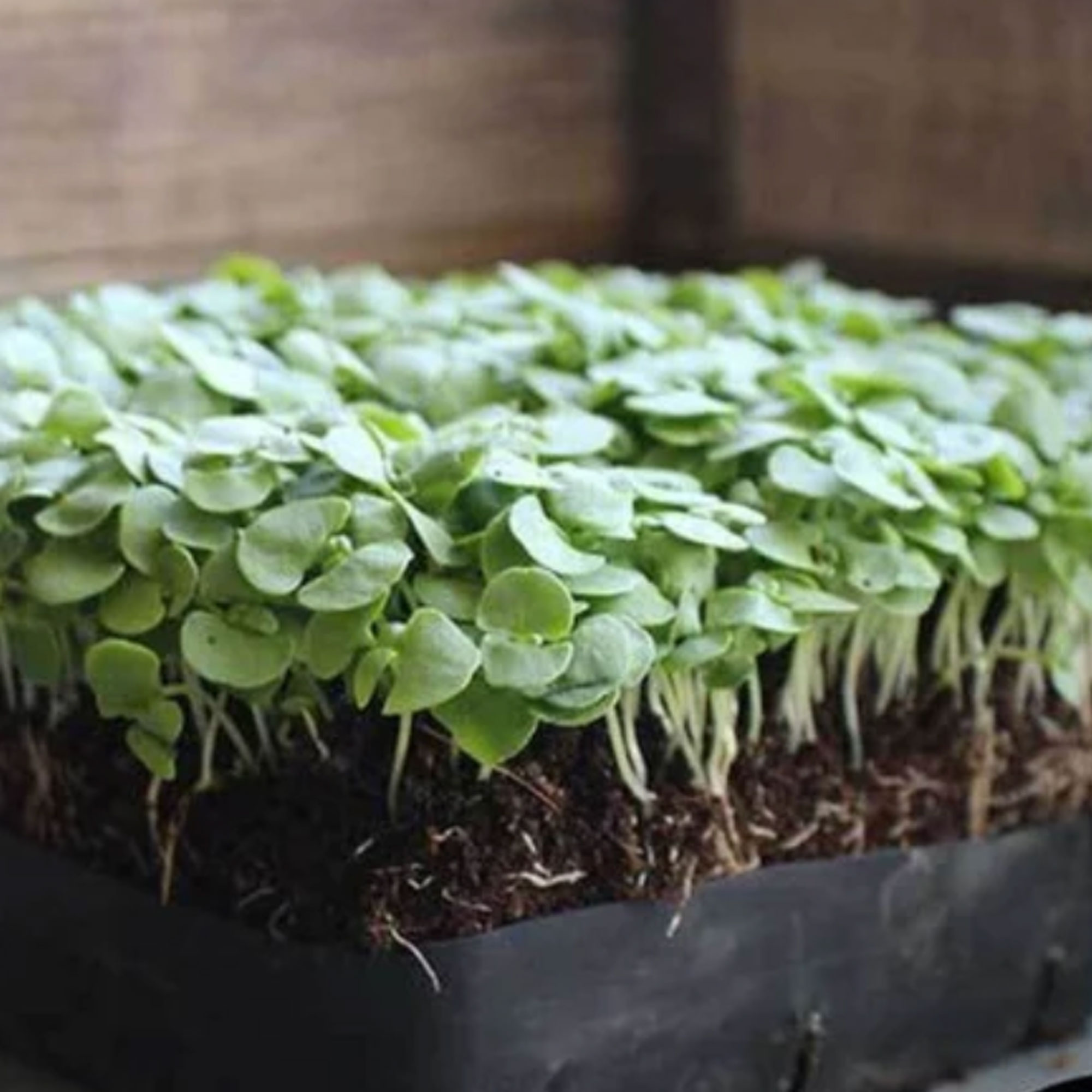
Price: $6.34/1oz
Microgreens are packed with nutrients and are so good for you. Use micro basil in place of regular basil in any recipe to add an extra intense basil flavor to your dish. Genovese basil is a beautiful green color with an interesting shape that makes a colorful garnish. Micro basil does not grow tall, so harvest close to the root line and rinse well.
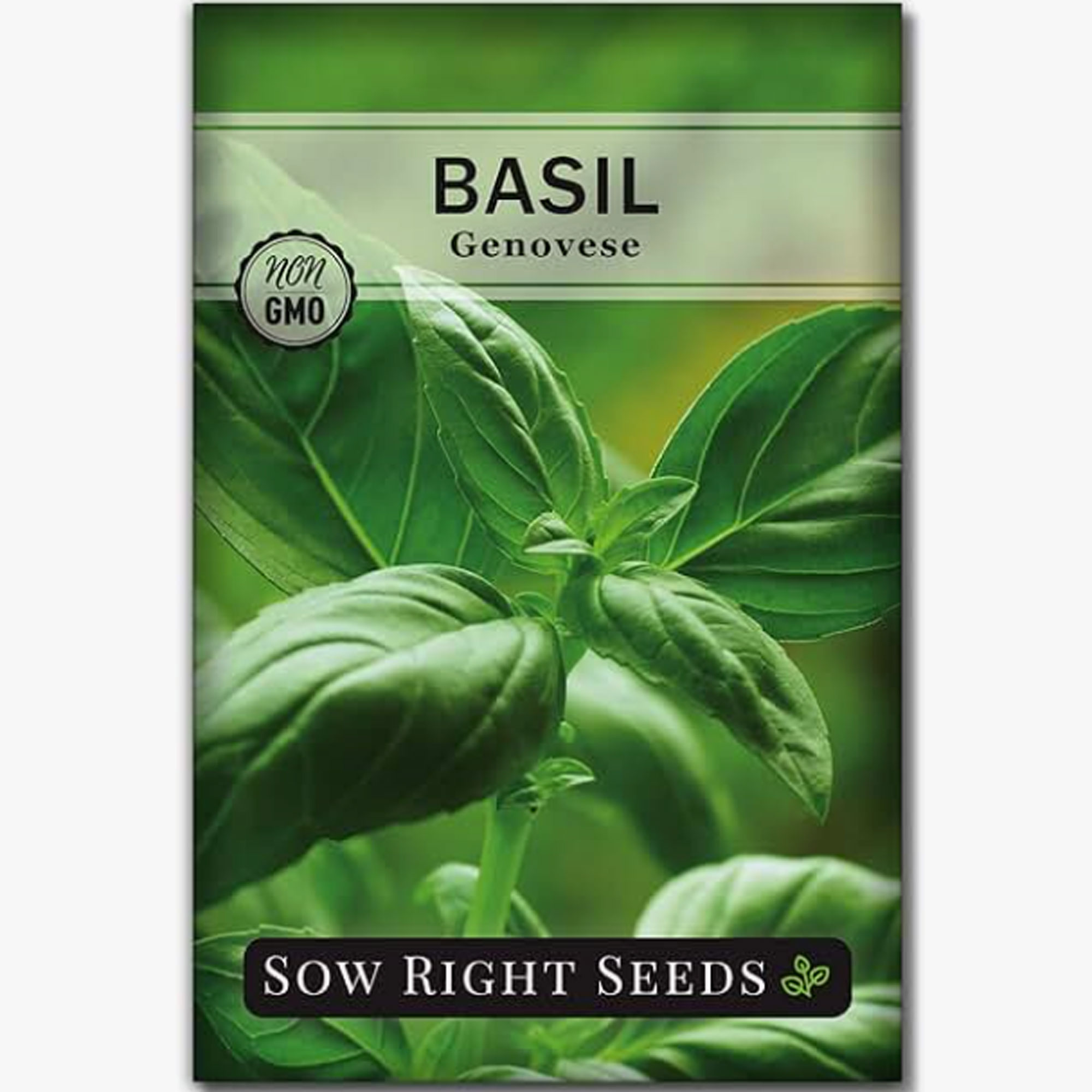
Price: $4.84/400 seeds
The popular culinary herb Genovese Basil is a wonderful gift for the gourmet cook and gardener, and the good news is it can easily be grown indoors. This variety will mature in 60-90 days, but you can begin harvesting as soon as your plant has 3 or 4 sets of leaves. Grows 2-3 inches tall with a spread of 10-16 inches.
What's the difference between the main types of basil?

The 'Siam Queen' variety of Thai basil has a very different look and taste to the Italian basil we're so familiar with
There are so many different varieties of basil to choose from that it's easy to feel overwhelmed.
"From any good garden center you can find a rich selection of basils including many delightful types that blend two flavors together so that you get a true basil taste with an extra layer of something else like lemon or anise," says gardening expert Maggie Stuckey. Here are some of the main ones to look out for when you're searching for seeds.
Italian basil is the most popular variety, easily recognizable and widely available, with the most common plant in this particular group known as sweet basil. Genovese basil is the best-known variety of sweet basil. Look for dependable varieties like 'Dolce Fresca' and 'Italian Cameo' for that mild, sweet flavor we all love.
Purple basil has leaves in shades of purple (as you'd expect) and dark red and the leaves have a licorice flavor. Popular varieties include 'Purple Opal' and 'Purple Ruffles'.
Thai basil has leaves that are much smaller, and the plants have distinctive purple stems and veining. Look out for 'Siam Queen' and 'Thai Anise Basil'. The leaves taste of anise, and the resulting peppery, spicy flavor is popular in Asian cooking.
Lemon basil is a specialty variety combining the familiar basil flavor with a zip of lemon. The fragrant leaves deliver a big hit of citrus scent too. Popular varieties include "Mrs. Burns" and 'Sweet Dani', with both growing tall so you'll need a big container to accommodate this type of basil plant.
We suggest trying a selection of different basil plants in your herb garden ideas to mix things up a little. Now find out how to grow basil indoors with our expert guide.
You can grow plenty of other herbs indoors on a windowsill too. Find out how to grow an indoor herb garden for fresh leaves all year round. Once you've mastered basil, other easy choices to add to your indoor collection include mint, rosemary, thyme, and chives.
"It's a great idea to take cuttings of all your favorite herbs like rosemary and mint and grow them indoors to enjoy," says Resh Gala. "It's very easy to root these cutting in water for a few weeks, then transplant them into small individual containers and grow them on a sunny windowsill."
Join our newsletter
Get small space home decor ideas, celeb inspiration, DIY tips and more, straight to your inbox!
Lifestyle journalist Sarah Wilson writes about flowers, plants, garden design and trends. She has studied introductory garden and landscape design and floristry, and also has an RHS Level 2 qualification in the Principles of Plant Growth and Development. In addition to homesandgardens.com and livingetc.com she's written for gardeningetc.com, Real Homes, Modern Gardens and Country Homes & Interiors magazines. Her first job was at Elle magazine, during which time a trip to the beautiful La Colombe d'Or in St-Paul-de-Vence led to an interest in writing about all things botanical. Later as lifestyle editor at Country Homes & Interiors magazine the real pull was the run of captivating country gardens that were featured.